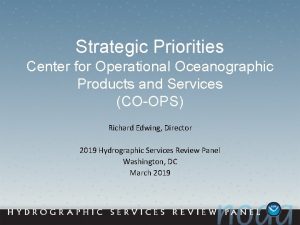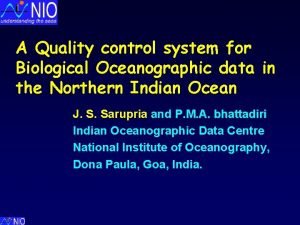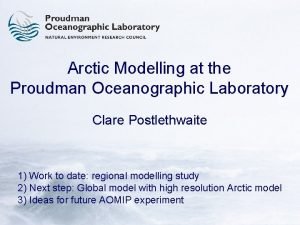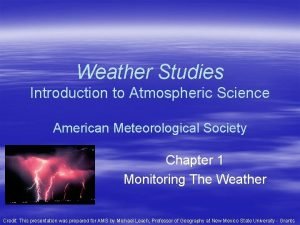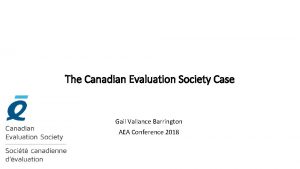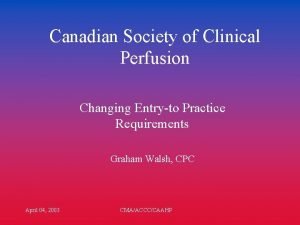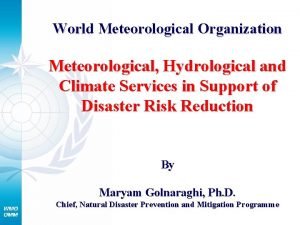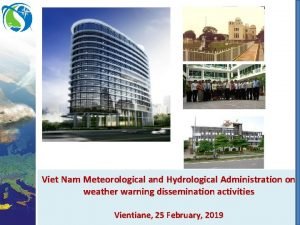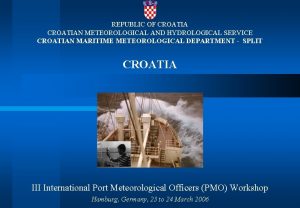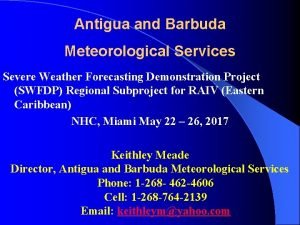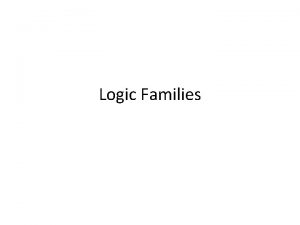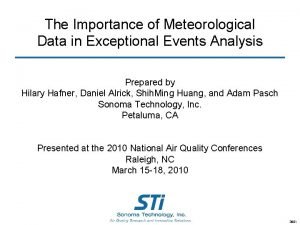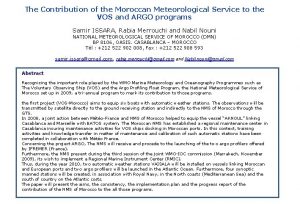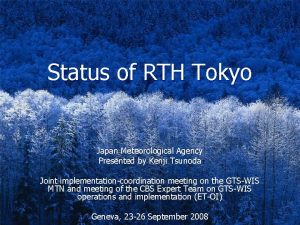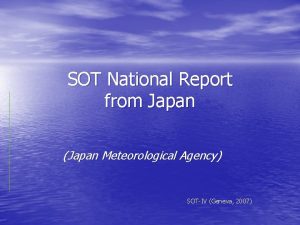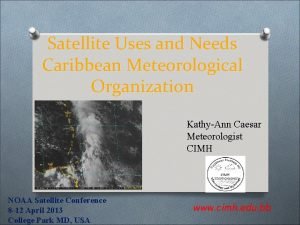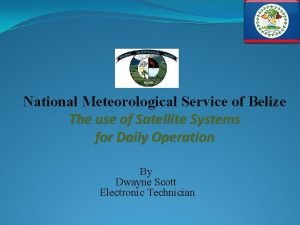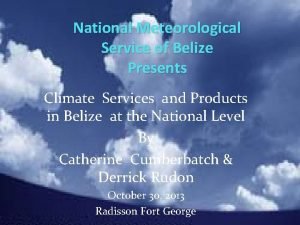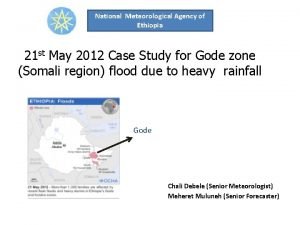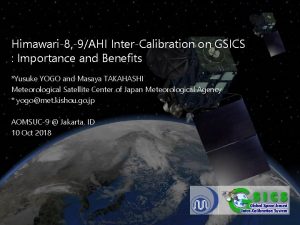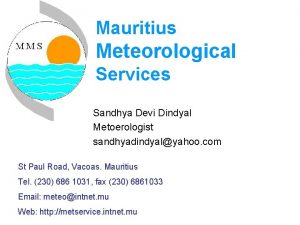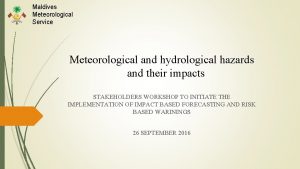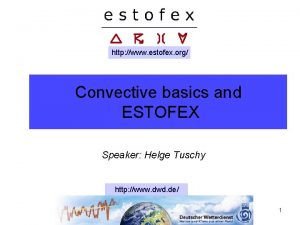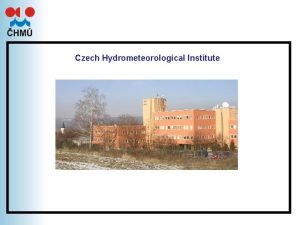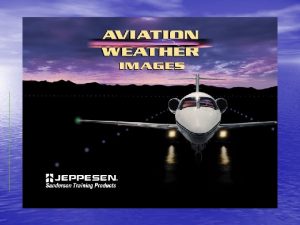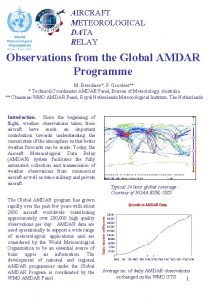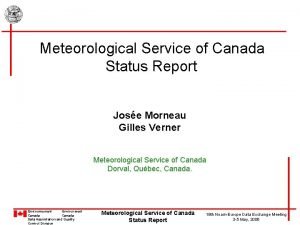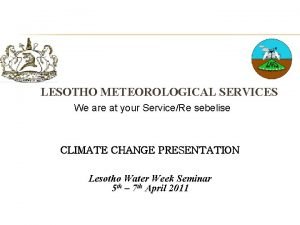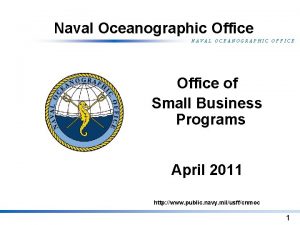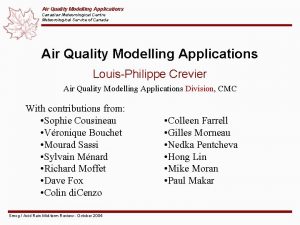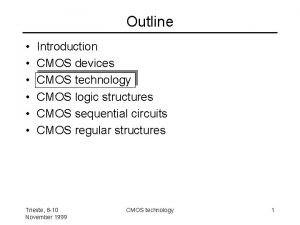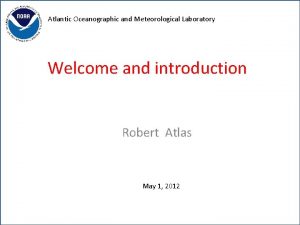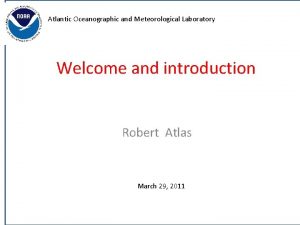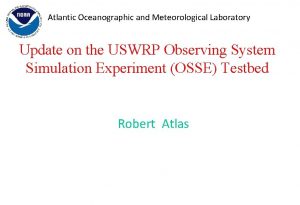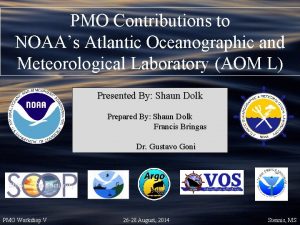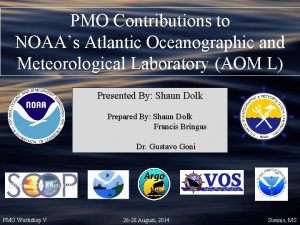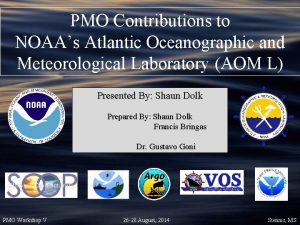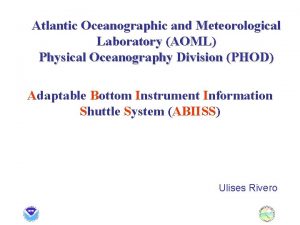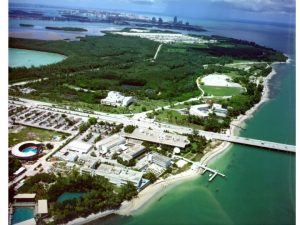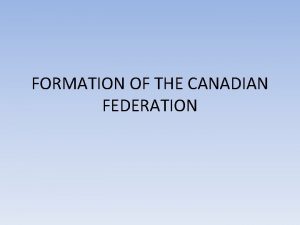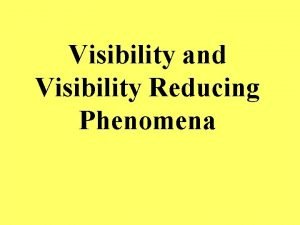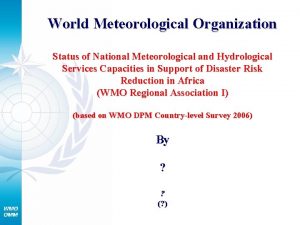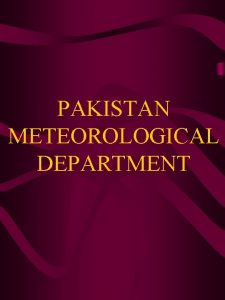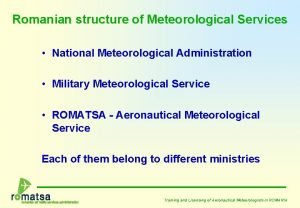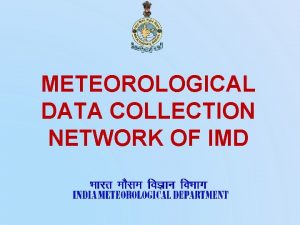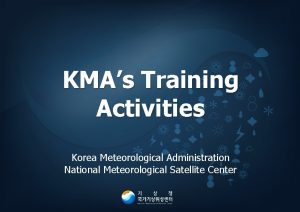Canadian Meteorological and Oceanographic Society CMOS www cmos































- Slides: 31

Canadian Meteorological and Oceanographic Society (CMOS) www. cmos. ca Purpose / Mission: CMOS exists for the advancement of meteorology and oceanography in Canada

What CMOS does… n n n Operates 14 Centres across Canada Annual Congress brings together meteorologists, oceanographers, and related disciplines to discuss issues of common interest Takes public positions on topics such as natural hazards, weather modification, climate change

What CMOS does… n n n Presents annual awards in the fields of meteorology and oceanography Provides scholarships/bursaries to students at graduate and undergraduate university levels Provides travel bursaries of up to $500 that are available to assist 20 -30 students attending the annual Congress to give a paper on their thesis research

What CMOS does… n n n Provides supplements to NSERC postgraduate scholarships Supports travel by Canadian high school teachers to Project Atmosphere Accredits consultants Endorses media weathercasters Publishes Atmosphere-Ocean (peer reviewed journal), CMOS Bulletin SCMO (bi-monthly), annual review, and Congress program/abstracts

Membership and Privileges - All members have the same privileges but receive different publications. - However, all members automatically receive at least the CMOS Bulletin SCMO and the Annual Review (on-line access). Fees: Regular member : Sustaining member : Corporate member : Student member : Retired member : Associate member : $80 $226 (receives all publications) $160 $20 (receives ATMOSPHERE-OCEAN on-line only) $53

Upcoming Congresses: • 2010 – Ottawa (joint with CGU) • 2011 – Victoria BC • 2012 –Montreal, Quebec (joint with AMS) • 2013 – Saskatoon, Saskatchewan Last of all. . . CMOS is our own Canadian society, and provides Canadian meteorologists, oceanographers, and related disciplines a forum for direct contacts with each other, through our membership, the CMOS web page, publications, and the annual Congress. No other society can provide the same benefits. Support your society!


Global and regional climate modelling for mountainous regions Andrew Bush Dept. of Earth and Atmospheric Sciences University of Alberta -

Global atmosphere-ocean general circulation model with sea ice (Geophysical Fluid Dynamics Laboratory, Princeton, New Jersey, and also NCAR) Simulations to date: Last Glacial Maximum (21 kbp) 16 kbp 12 kbp 9 kbp 6 kbp Today The next century under mean IPCC forcing Doubled CO 2

Simulated Geophysical Fluid Dynamics Laboratory (GFDL) model used in IPCC studies Observations

Factors involved in the global modelling: Atmospheric composition Solar forcing (including orbital parameters) Prescribed bare surface land albedo Continental ice extent (and albedo) Sea level (to within the model resolution) Gravity wave drag over large topographic features Ocean bathymetry (numerically problematic for the Arctic)

Interests: Atmosphere-ocean-cryosphere interaction/evolution Freshwater resources; alpine glaciers (Garry Clarke, UBC) Possibilities: Detailed regional interaction between the atmosphere, alpine glaciers, and the pedosphere (Andrew Weaver). Arctic sea ice modelling (Paul Myers).








Domain 3









Ozone from measurements EPA Never Exceed more than one day per year


Temperature (*C) (1) 35 30 25 20 15 Temperature (*C) (1) 10 0 -5 1 182 363 544 725 906 1087 1268 1449 1630 1811 1992 2173 2354 2535 2716 2897 3078 5 Voltage (V) (*2) 0. 7 0. 6 0. 4 0. 3 Voltage (V) (*2) 0. 2 0. 1 0 1 182 363 544 725 906 1087 1268 1449 1630 1811 1992 2173 2354 2535 2716 2897 3078 Atmospheric CO 2/1 E 3 0. 5
 Center for operational oceanographic products and services
Center for operational oceanographic products and services Oceanographic quality measurement
Oceanographic quality measurement Proudman oceanographic laboratory
Proudman oceanographic laboratory American meteorological society
American meteorological society Triple e bottom line
Triple e bottom line Canadian evaluation society
Canadian evaluation society Canadian society of clinical perfusion
Canadian society of clinical perfusion Gertler econ
Gertler econ National meteorological and hydrological services
National meteorological and hydrological services Vietnam meteorological and hydrological administration
Vietnam meteorological and hydrological administration Croatian meteorological and hydrological service founded
Croatian meteorological and hydrological service founded Antigua met office
Antigua met office Comparison of logic families table
Comparison of logic families table Modern earth science
Modern earth science Importance of meteorological data
Importance of meteorological data Morocco meteorological service
Morocco meteorological service Tokyo meteorological agency
Tokyo meteorological agency Japan meteorological agency
Japan meteorological agency Pakistan meteorological department satellite images
Pakistan meteorological department satellite images National meteorological center
National meteorological center National meteorological service of belize
National meteorological service of belize Ethiopian meteorological agency
Ethiopian meteorological agency Meteorological satellite center of jma
Meteorological satellite center of jma Mauritius meteorological services staff
Mauritius meteorological services staff Tornado in maldives
Tornado in maldives Estofex meteorological data
Estofex meteorological data Czech meteorological institute
Czech meteorological institute Imc instrument meteorological conditions
Imc instrument meteorological conditions Aircraft meteorological data relay
Aircraft meteorological data relay Dubai meteorological office
Dubai meteorological office Meteorological service of canada
Meteorological service of canada Lesotho meteorological services
Lesotho meteorological services
